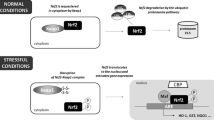Abstract
Induction of heat shock proteins (HSPs) following cell injury contributes to the protection of vital cell functions. It was, therefore, of interest to study the effects of transient renal ischaemia on the abundance and distribution of two HSPs, HSP25 and HSP72, in renal tissue using Western-blot techniques. Analyses were performed on the supernatant (HSP25, HSP72) and pellet (HSP25) of homogenates obtained from cortex (CX) and outer (OM) and inner (IM) medulla of the rat kidney immediately after 60 min of ischaemia followed by varying periods of reperfusion. Ischaemia of the left kidney caused HSP25 contents to decrease in CX, OM and IM by 73, 89 and 54% respectively, compared with the corresponding zones of the contralateral control kidney. This initial decrease in supernatant HSP25 was accompanied by an increased abundance of HSP25 in the pellet. Following reperfusion, HSP25 contents in the supernatant gradually increased in CX and OM, reaching, after 24 h, values that were 5.4- and 2.5-fold higher, respectively, than those in the control kidneys. After 7 or 14 days of reperfusion, HSP25 contents had not completely normalised in CX, but had reached control levels in OM. In IM, the HSP25 content remained below control throughout the entire reperfusion period. HSP72 (supernatant) was below the detection limit in the CX of the control kidney. Similar to the level of HSP25, that of HSP72 was also markedly lower in OM and IM immediately after ischaemia. The intrarenal distribution of HSP72 and the sequence of zonal changes in HSP72 contents were similar to those observed for HSP25. These results are compatible with the view that, during ischaemia and the initial reperfusion period, HSP25 migrates from the cytoplasmic compartment (supernatant) into the nucleus and/or associates with cytoskeletal structures. The observation that both HSP25 and HSP72 are transiently induced in CX and OM, but not in IM, may be explained by the fact that, while all kidney cells are exposed to ischaemic stress, only inner medullary cells experience a major postischaemic attenuation of osmotic stress.
Similar content being viewed by others
Author information
Authors and Affiliations
Additional information
Received: 11 February 1997 / Received after revision and accepted: 26 March 1997
Rights and permissions
About this article
Cite this article
Schober, A., Müller, E., Thurau, K. et al. The response of heat shock proteins 25 and 72 to ischaemia in different kidney zones. Pflügers Arch 434, 292–299 (1997). https://doi.org/10.1007/s004240050399
Issue Date:
DOI: https://doi.org/10.1007/s004240050399



